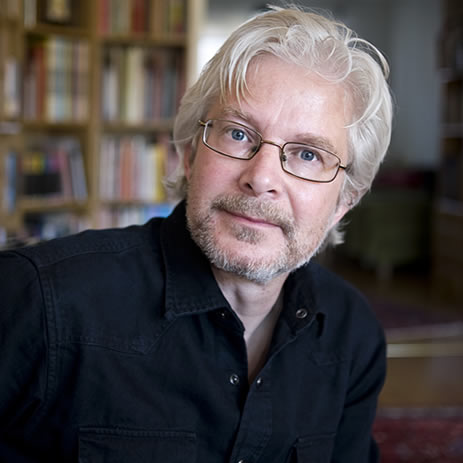When ethical dilemmas are discussed using case descriptions or vignettes, we tend to imagine the cases as taken from reality. Of course, the vignettes are usually invented and the descriptions adapted to illustrate ethical principles, but when we discuss the cases, we tend to have the attitude that they are real. Or at least real possibilities: “What should we do if we encounter a case like this?”
Discussing ethical cases is an extremely good exercise in ethical reasoning and an important part of the education and training of healthcare professionals. But sometimes we may also need to keep in mind that these discussions are adapted exercises in the ethics gym, so to speak. Reality rarely delivers separate dilemmas that can be handled one by one. Often, life is rather a continuous flow of more or less clearly experienced challenges that change faster than we can describe them. We cannot always say what the problem situation actually looks like. Therefore, it may sometimes be wise not to decide or act immediately, but to wait for the situation to take a different and perhaps clearer form. And then the ethical problem may in practice have been partially resolved, or become more manageable, or become obsolete.
Does that sound irresponsible? Judging by two texts that I want to recommend today, responsible healthcare professionals may, on the contrary, experience a friction between ethics in principle and ethics in practice, and that it would be unethical not to take this seriously. The first text is an essay by Joar Björk (who is both an ethicist and a palliative care physician). In the journal Palliative Care and Social Practice, he discusses a fictional patient case. A man with disseminated prostate cancer is cared for by a palliative care team. In the vignette, the man has previously expressed that he wants complete knowledge of his situation and what his death might look like. But when the team has time to talk to him, he suddenly changes his mind and says that he does not want to know anything, and that the issue should not be raised again. How to act now?
According to Joar Björk, the principle-based ethical standard recommendation here would probably be the following. Respect for the patient’s autonomy requires that the team not try to carry out the conversation. Only if there is good reason to believe that a conversation can have great medical benefit can one consider trying to inform the patient in some way.
Note that the principle-based recommendation treats the situation that has arisen as a separate case: as a ready-made vignette that cannot be changed. But in practice, palliative teams care for their patients continuously for a long time: so much is constantly changing. Of course, they are aware that they cannot impose information on patients who state that they do not want it, as it violates the principle of autonomy. But in practice, the unexpected situation is an unclear ethical challenge for the care team. What really happened, why did he change his mind? Does the man suddenly refuse to accept his situation and the proximity of death? Maybe the team should cautiously try to talk more to him rather than less? How can the team plan the man’s care – maybe soon a hospital bed will be needed in his home – if they are not allowed to talk to him about his situation? As palliative care teams develop good listening and communication skills, the situation may very well soon look different. Everything changes!
Joar Björk’s reflections give the reader an idea of how ethical challenges in practice take on different forms than in the vignettes that are so important in ethics teaching and training. How does he deal with the gap between ethics in principle and ethics in practice? As I understand him, Joar Björk does not advocate any definite view on how to proceed. But he is trying to formulate what he calls a palliative care ethos, which could provide better ethical guidance in cases such as the one just described. Several authors working in palliative care have attempted to formulate aspects of such a care ethos. In his essay, Joar Björk summarizes their efforts in 11 points. What previously sounded passive and irresponsible – to wait and see – appears in Joar Björk’s list in the form of words of wisdom such as “Everything changes” and “Adaptation and improvisation.”
Can healthcare professionals then find better ethical guidance in such practical attitudes than in well-established bioethical principles? Joar Björk tentatively discusses how the 11 points taken together could provide guidance that is more sensitive to the practical contexts of palliative care. I myself wonder, however – but I do not know – whether it would not be wise to allow the gap between ethics in principle and ethics in practice to be as wide as it is. The 11 points probably have their origin in an ethical care practice that already functions as the points describe it. The practice works that way without healthcare professionals using the points as some kind of soft guidance. Joar Björk thus describes a palliative care ethics in practice; a description that can help us think more clearly about the differences between the two forms of ethics. Reflecting on the 11 points can, for example, make healthcare professionals more aware of the specifics of their practice, so that they do not wrongly blame themselves if they do not always relate to situations that arise as if they were separate cases that illustrate ethical principles.
Perhaps it is impudent of me to suggest this possibility in a blog post that recommends reading, but Joar Björk’s reflections are so thought-provoking that I cannot help it. Read his essay here: Ethical reflection: The palliative care ethos and patients who refuse information.
You will certainly find Joar Björk’s reflections interesting. Therefore, I would like to mention a new book that also reflects on the gap between ethics in principle and ethics in practice. The book is written by Stephen Scher and Kaisa Kozlowska and is published with open access. You can find it here: Revitalizing Health Care Ethics. The Clinician’s Voice.
So, I think it is difficult to see clearly the difference between ethics in principle and ethics in practice. We tend to transfer characteristics from one to the other, and become dissatisfied when it does not work. The book by Scher and Kozlowska therefore uses the warning “Mind the gap” to draw attention to the difference. If we mind the gap between the platform and the train – if we do not imagine the train as an overly mobile platform, and the platform as an overly stationary train – then perhaps the two forms of ethics can accept and find better support in each other. More often than we think, we are dissatisfied for the simple reason that we fail to keep different things apart.

Written by…
Pär Segerdahl, Associate Professor at the Centre for Research Ethics & Bioethics and editor of the Ethics Blog.
Björk J. Ethical reflection: The palliative care ethos and patients who refuse information. Palliative Care and Social Practice. 2025;19. doi:10.1177/26323524251355287
Stephen Scher, Kasia Kozlowska. 2025. Revitalizing Health Care Ethics. The Clinician’s Voice. Palgrave Macmillan Cham.
We recommend readings






